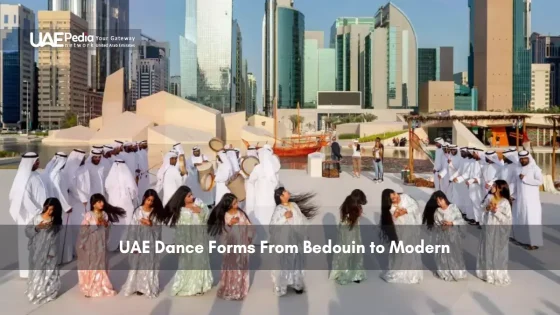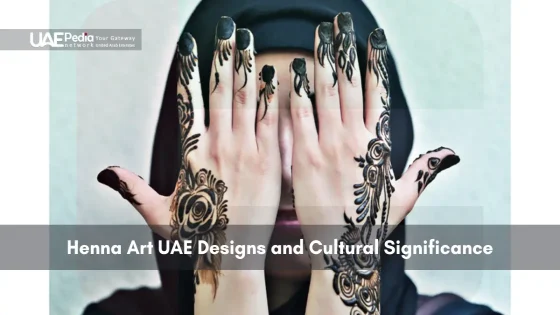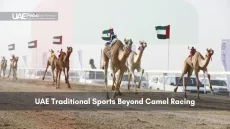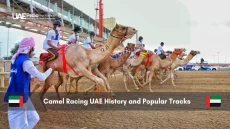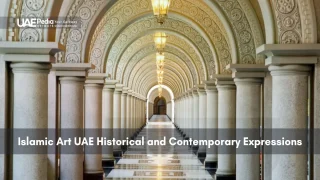What if the rhythm of a nation’s soul could be traced through the sway of its dancers? Across the deserts and cities of the United Arab Emirates, movement tells stories older than skyscrapers—stories of survival, celebration, and connection.
From Bedouin gatherings under starlit skies to electrifying festival stages, these traditions pulse with life. Take the Ayyalah, where rows of men clasp bamboo sticks and chant—a centuries-old symbol of unity now performed at weddings and national events. The beat of drums and oud strings doesn’t just set the tempo; it weaves generations together.
Modern cities like Abu Dhabi haven’t erased this legacy—they’ve amplified it. Contemporary choreographers blend traditional footwork with global influences, creating performances that honor heritage while embracing innovation. Festivals across the Arab Emirates turn town squares into living museums, where anyone can join the circle.
Here’s what you’ll discover:
- How nomadic rituals evolved into today’s festival highlights
- The role of music in shaping communal celebrations
- Where to experience authentic performances (and respectful participation tips)
The Historical Evolution of UAE Dance
The history of a people is often written not in ink, but in the dust kicked up by dancing feet. Long before modern cities rose, Bedouin tribes turned survival into art—their bodies becoming brushes that painted tales of camel caravans, monsoon rains, and moonlit celebrations.
Origins and Bedouin Roots
Picture this: a desert campfire surrounded by rhythmic stomps and claps. For nomadic communities, movement wasn’t just entertainment—it was a lifeline. Men reenacted battles with bamboo sticks (Ayyalah), their synchronized steps mirroring the cooperation needed to thrive in harsh sands. Drums pounded like heartbeats, while oud melodies mimicked wind whistling through dunes.
Every gesture held meaning. Circular formations symbolized unity against scarcity. Leaps echoed the joy of finding water. Even today, these patterns surface at weddings and national events, stitching past and present through muscle memory.
Cultural Exchanges and Migration
Trade routes transformed traditions. Persian pearl divers brought swaying hip movements. African rhythms fused with local drumming techniques. Indian merchants introduced intricate footwork seen in coastal towns. This blend birthed new forms—like the Yowlah, where twirling rifles honor ancestral resilience.
By the 20th century, ports like Abu Dhabi buzzed with global influences. Yet the core remained: music as communal glue, movements as living history books. As one elder once shared, “Our dances are maps—you just have to know how to read them.”
The Power of UAE Dance in Emirati Culture
Imagine this: a wedding procession where every step tells a story older than the desert winds. Across the United Arab Emirates, traditional movements aren’t just art—they’re living symbols of identity. From birth celebrations to national days, these rhythmic dialogues connect communities through shared history.
Symbolism in Festivals and Weddings
Take Al Ayyalah, where men form two facing lines with bamboo sticks. The clatter mimics ancient battle preparations, but today it’s harmony in motion—performed at royal events and village gatherings alike. Women’s adaptations like Al Wanna feature graceful hand flourishes during henna nights, celebrating feminine strength through subtle gestures.
Every leap and spin holds meaning. Circular formations represent eternal bonds. Slow, deliberate footwork honors ancestors’ resilience. Even the colors of costumes—deep reds for passion, whites for purity—speak louder than words.
Expression of Unity and Resilience
During national festivals in Abu Dhabi, you’ll see entire neighborhoods swaying together. Drums pound like collective heartbeats. Elders chant verses passed down through generations. “Our dances are threads weaving us into one cloth,” shares a Dubai-based cultural guide.
Modern troupes now blend traditional footwork with contemporary beats. Yet the core remains: these movements unite young and old, urban and rural. Whether performed in glittering arenas or desert clearings, they transform spectators into participants—keeping heritage alive through every shared step.
Traditional UAE Dance Forms: A Closer Look
Step into a moonlit desert gathering where every movement tells a story older than the dunes. Two iconic performances—Ayyalah and Yolla—reveal how rhythm and ritual unite communities across generations. These art forms turn dusty courtyards into stages where history breathes through synchronized steps.
Ayyalah – The Iconic Stick Dance
Picture this: 50 men facing off in two lines, bamboo sticks raised like ancient warriors. The Ayyalah transforms clattering wood into a symphony of solidarity. Originally practiced to prepare for battle, today it’s performed at weddings and national events in Abu Dhabi. “The sticks aren’t weapons here—they’re bridges,” explains a veteran dance leader who trains new recruits.
What makes it unique? Everyone’s invited. Rich or poor, local or visitor—you join the circle. Leaders chant verses while drummers set a heartbeat rhythm. Every stomp kicks up sand that’s carried stories for centuries.
Yolla and Other Ritualistic Performances
Now meet the Yolla, where twirling rifles replace sticks. This coastal tradition honors pearl divers and traders who shaped the Arab Emirates. Dancers spin in precise arcs, mimicking ocean waves and monsoon winds. A three-drum ensemble drives the tempo, their beats echoing African and Persian influences absorbed through trade routes.
Behind the scenes, dance captains preserve every detail. They coach newcomers on footwork patterns passed down since Bedouin times. As one elder joked, “Forget gym memberships—master the Yolla, and your calves will thank you!”
Modern Influences and Evolving Traditions in UAE Dance
Picture a fusion where laser lights bounce off twirling wooden rifles while drum machines sync with ancient chants. Across Abu Dhabi’s festival stages and Dubai’s urban plazas, young performers are rewriting tradition—not erasing it. Their secret? Balancing ancestral rhythms with 21st-century flair.
Youthful Innovations and Showmanship
Take the reimagined Al Yowla. Once performed with simple percussion, it now features electronic beats and acrobatic spins. A Dubai troupe recently wove hip-hop footwork into the routine—their rifles painted in neon hues. “We’re speaking two languages at once,” says a 24-year-old dancer. “One for our grandparents, one for our TikTok followers.”
Urban festivals showcase these hybrids. At Abu Dhabi’s Cultural Summit, LED-backdropped performances merge ayyalah formations with augmented reality effects. Crowds cheer as drones project traditional poetry above the dancers. Even costumes get upgrades: breathable fabrics replace heavy wool, while embroidery patterns glow under blacklights.
| Element | Traditional | Modern |
|---|---|---|
| Music | Oud & frame drums | Digital remixes + live percussion |
| Costumes | Handwoven wool | Tech-infused textiles |
| Performance Style | Circular group formations | Stage lighting + multimedia |
| Instruments | Bamboo sticks | Custom-painted rifles |
This evolution isn’t just flashy—it’s strategic. By blending heritage with innovation, artists keep younger crowds engaged while honoring elders. Think of it as cultural time travel: every backflip over a drum solo builds bridges between eras.
Want to see it live? Check out Al Ain’s Spring Festival or Dubai’s Desert Rhythm Nights. You’ll spot grandmothers clapping alongside Gen Z influencers—all united by that unmistakable beat.
Exploring UAE Dance: The Role of Music and Instruments
Close your eyes and let the heartbeat of drums guide you through centuries of storytelling. Without the surge of strings and thunder of percussion, traditional performances would lose their soul—music doesn’t just accompany movement here; it breathes life into it.
Rhythmic Drums and Percussion
Feel the mirwas drum’s rapid-fire beats—a double-headed wonder smaller than a coffee tin. This powerhouse drives the Ayyalah, its sharp claps syncing perfectly with stomping feet. Larger tabl drums anchor the rhythm, their deep booms echoing across desert valleys during celebrations.
Musicians train for years to master complex patterns. As one percussionist explains: “Our hands speak the language of ancestors—every tap carries memories of harvests and homecomings.” At national events like the parades documented here, you’ll feel the ground shake under synchronized rhythms.
Melodic Strings and Reed Instruments
Now catch the oud’s honeyed tones—a pear-shaped lute that weeps and laughs through ceremonies. Paired with the nasal cry of the mizmar (a double-reed ancestor of the oboe), these instruments paint emotional landscapes. Watch dancers pivot sharply when the reed’s pitch climbs, their spins mirroring melodic peaks.
| Instrument | Role | Modern Twist |
|---|---|---|
| Mirwas Drum | Sets battle-ready tempos | Electronic triggers for stadium shows |
| Oud | Narrates emotional arcs | Hybrid designs with steel strings |
| Mizmar | Signals dance transitions | Paired with synth pads |
This symphony of sounds isn’t background noise—it’s a conversation. Musicians adjust tempos mid-performance, challenging dancers to improvise. The result? Every show feels freshly alive, yet deeply rooted in shared heritage.
Embracing the Legacy: Celebrating UAE Dance for Future Generations
The desert sands remember every step—from Bedouin firelit circles to neon-lit festival stages. What began as survival rituals now thrives as vibrant storytelling, where synchronized footwork bridges centuries. Young performers add backflips to rifle spins while elders nod approval, proving traditions aren’t frozen in time but carried forward like drumbeats across dunes.
Every sway and clap holds layers: the grit of pearl divers, the laughter of wedding guests, the pride of national parades. Music remains the heartbeat—oud strings humming ancestral tales, digital remixes amplifying them for new ears. These rhythms don’t just entertain; they teach resilience, unity, and the art of belonging.
Want to feel that pulse? Join the circle at Al Dhafra Festival’s moonlight performances or Dubai’s urban dance labs. Local troupes welcome curious travelers, offering workshops where you’ll learn stick patterns older than oil wells. “It’s not about perfect moves,” says a Sharjah instructor. “It’s about keeping stories alive through your body.”
So whether you’re snapping photos at Qasr Al Hosn or clapping along in a desert camp, remember: you’re not just watching dance. You’re stepping into a living conversation—one that turns strangers into kin with every shared rhythm. The next chapter’s being written right now. Will your feet join the story?
Bedouin roots infuse movements with storytelling grit – think rhythmic foot-stomping mirroring desert journeys or synchronized group formations reflecting tribal unity. These elements persist in modern interpretations at festivals like Qasr Al Hosn.
This stick dance symbolizes protection and communal joy. Men circle poets reciting verses while clashing bamboo rods in time with drums, creating a vibrant spectacle that honors heritage while celebrating new beginnings.
Expect the deep pulse of the al-ras drum anchoring rhythms, paired with the mizmar’s reedy melodies. These sounds evoke pre-oil era gatherings, keeping rituals like harvest celebrations alive through sound.
Absolutely! Troupes like Firkat Al Ayala blend acrobatic flair with classic Ayyalah footwork, while Dubai’s Urban Tarbiya initiative fuses hip-hop with folk motifs – proving tradition isn’t static when creativity meets respect.
Time your trip with the Al Dhafra Festival’s camel dances or Abu Dhabi Cultural Foundation’s weekly shows. For spontaneous encounters, check Liwa Oasis date harvests or Sharjah Heritage Days – where impromptu yowlah circles often erupt!
